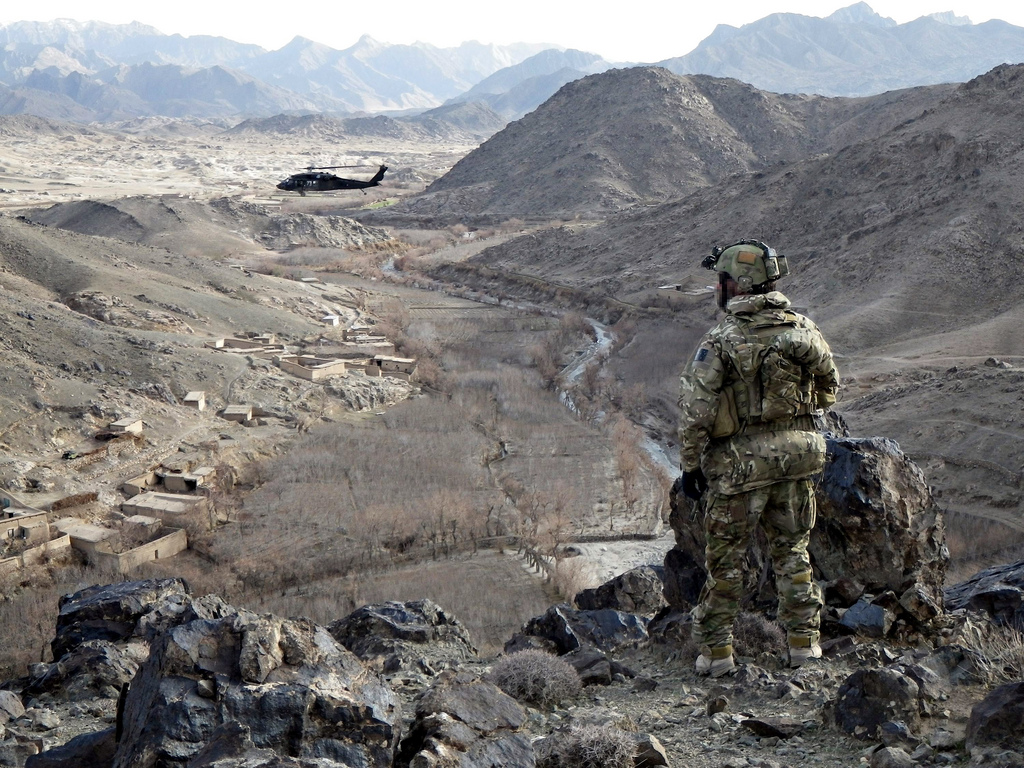 The Prime Minister’s statement to the Parliament yesterday on Australia’s Afghanistan strategy continues to demonstrate planning for a relatively quick ADF exit from Uruzgan province. Any international pretence about nation building in Afghanistan has long been abandoned in favour of a pragmatic acceptance that the situation there is about as good as it is going to get.
The Prime Minister’s statement to the Parliament yesterday on Australia’s Afghanistan strategy continues to demonstrate planning for a relatively quick ADF exit from Uruzgan province. Any international pretence about nation building in Afghanistan has long been abandoned in favour of a pragmatic acceptance that the situation there is about as good as it is going to get.
Australia can claim some part of the credit for four positive outcomes in Afghanistan. First, and as PM Gillard said, ‘today, international terrorism finds no safe haven in Afghanistan’; well yes, for as long as the drones and special forces continue their operations. Second, as long as the US remains engaged, the Taliban won’t be able to take power in Kabul again unless it’s through some politically negotiated and internationally acceptable power-sharing agreement. A third positive is that Afghanistan, and Uruzgan province with it, has its best chance probably since the 1970s to handle its internal security challenges. These aren’t perfect outcomes but Strategist readers will understand that pursuing perfection is the enemy of peace. That’s why Gillard and Obama are wise to resist any call to keep going for just one or two more fighting seasons in order to show that counterinsurgency, or counter terrorism (‘regular’ or ‘lite’) strategies can work. They can’t.
The fourth positive outcome from the Afghanistan conflict is the strengthening of our alliance relationship with the United States. That’s an important gain for Australia. Our willingness to join the serious fight takes us to a different level with the US. True, it raises American expectations of us, but it also underpins why the US is prepared to invest its security credibility in Marine and USAF collaboration in northern Australia and naval operations from Fremantle. The ADF’s future military leadership has also been brought to a higher standard of skill and operational and tactical savvy because of the operation. These outcomes have come at a terrible cost in terms of our casualties as well as those of our ISAF partners and, most particularly, the Afghans. But they are meaningful gains not to be trivialised.
A returned Obama administration will in all likelihood move faster than currently expected to withdraw the bulk of its forces. That’s the Administration’s view, driven by the White House and National Security Committee, and it won’t be swayed from that line by the combatant commanders. A Romney Administration might take a little more time to settle its approach but won’t change the US trajectory to draw down its forces. Australia will need to make sure its own withdrawal time table isn’t upset by American haste.
On our transition timing Gillard said:
When I addressed the Australian Strategic Policy Institute in April, the Government’s view was that, once started, transition in Uruzgan should take twelve to eighteen months and that when transition is complete, the majority of our troops will have returned home. Six months on, and three months into transition, our analysis is that this remains the case.
In effect that means Australia is now on a six to twelve-month time table to transition. Fit that into our own political cycle and I would suggest that the government would prefer six months to twelve.
After the transition, the Prime Minister says that Australia will stay engaged in Afghanistan with aid and other financial support. There will be military training and the government ‘is prepared to consider a limited special forces contribution—in the right circumstances and under the right mandate.’ Australia should take a clear-eyed assessment here: the emerging strategic challenges in our own region dictates that our primary focus should come back to the Asia–Pacific. A small ADF training program is appropriate for a transition period in Afghanistan and the Prime Minister should make sure that ‘limited’ really does mean limited as far as any future special forces commitment is concerned.
Peter Jennings is executive director of the Australian Strategic Policy Institute. Image courtesy of Flickr user ISAFmedia.

